by Katrine Bouschinger Christensen and Eva Novrup Redvall
In the 2010s, Danish public service broadcasting gained international attention through the interest in Nordic Noir crime and Scandi dramas such as The Killing (2007-2012) and Borgen (2010-2013). This led to a number of publications on the particularities of the productions as well as the production strategies from the Danish Broadcasting Corporation (DR), not the least through the research project ‘What Makes Danish TV Series Travel?’ which ended earlier this year.[i]
While Danish series have thus been thoroughly researched by Danish as well as international scholars in the past years, one successful strand of Danish drama has attracted almost no attention, that is serial fiction targeted at children and young audiences. One of the explanations for this is that these series traditionally do not travel widely. However, this is starting to change, partly due to the success of the Norwegian youth drama SKAM (2015-2017) which pointed to the fact that the Scandinavian countries have focused on producing innovative quality content for children and young audiences for many years.[ii]
Building on the first case studies from a new research project, Reaching Young Audiences (RYA), on serial fiction and cross-media storyworlds for children and young audiences, this first CST blog from the project focuses on what is currently happening in Danish public service drama for tweens where DR Ultra – until this year targeting children aged seven to 12 – has worked hard on finding the best strategies for making relevant fiction to its target audience.
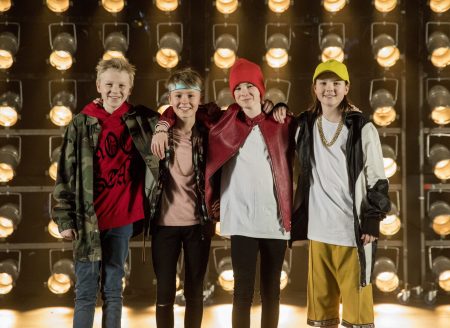
Fig. 1: The DR Ultra boy band drama BaseBoys aired its third season in December 2019. Photo credit: DR.
An important part of this strategy builds on involving children in different ways, already from the stages of idea development and screenwriting. This has helped create recent hits such as the school serial Klassen (The Class, 2016-now), the boy band drama BaseBoys (2018-now), and Ultra has recently also ventured into more genre drama territory with the whodunnit (who burned the school down?!) Skyldig (Guilty, 2019). However, DR Ultra is facing major changes when going online only from January 2020, and has recently redefined its target audience and improved its media player to try to stay ahead in a national television landscape marked by fierce competition for the time and attention of children and young audiences.
Danish public service television for children in an age of streaming
The rapidly changing media landscape makes public service broadcasters vulnerable, not the least in their attempts to attract and retain younger audiences. To boil matters down Ofcom notes in its annual report that “if young people don’t consider the BBC as a core part of their viewing, then it may be hard to encourage them to pay the license fee” which will have significant implications for the BBC’s revenue and its ability to deliver its Mission and Public Purposes (Ofcom 2019, 8). According to the most recent Ofcom report from October 2019, there is a continued decline in the reach of CBBC (aimed at children aged six to 12).
As in many other countries, DR is struggling to find the best strategies for reaching children and young audiences while protecting what is regarded as a proud tradition of producing quality children’s content (Mollerup 2017; Christensen 2013). Public service television still has a strong position in the overall population of 5.8 million people. Danes (over the age of three) watch an average of two hours and 22 minutes of television per day. In 2018, 36.6% of this viewing was on DR channels, while 39.1% was on the channels of the government-owned subscription-based broadcaster TV 2.[iii]
DR has prioritized children’s television through seven decades and established a channel for children aged four to seven, DR Ramasjang, in 2009. In 2013, DR Ultra for seven to 12-year-olds launched to deliver more age-appropriate content for the older kids. From the outset, there were big ambitions for Ultra. As DR’s Director-General Maria Rørbye Rønn announced in 2012, “ultra” means “something extra”, and the name of the channel signals “a desire to go new ways with the children’s TV genre” (Berså 2012).
Ultra produces content in many genres – e.g. the award-winning news programme Ultra Nyt (2013-now) – but producing fiction for children in the Danish language has always been a main priority. Fiction is popular with children who now have the possibility to watch international series and ‘media snacks’ on many different platforms. The question is how to make competitive Danish content to ensure that public service fiction is still part of their media diet.
DR Ultra’s strategies for making fiction
Commissioning editor at DR Ultra, Jonas Kryger Hansen, presents the overall mission for Ultra’s fiction as having a particular Danish perspective in both themes and characteristics compared to the international competition. Ultra series should reflect the reality of Danish children, even if stories have a non-realist setting (J. K. Hansen 2018). One of the tools for creating engaging series is to build on what the DR Media researchers have defined as the main ingredients of ‘a streaming hit’ where series should have:
- A great cast
- A personal mission
- Something at stake
- Recognizable situations from the daily life of the target audience
- Elements of fascination
- Human relations
- Serial format
- And multiple episodes[iv]
Many of these criteria apply to producing engaging television fiction for all ages. However, the issue of producing many episodes is crucial when trying to engage children who are used to following YouTubers and bloggers on a daily basis. Fiction from Ultra should similarly continuously be present in children’s lives, which calls for producing many hours of content. Accordingly, the desired Ultra production has a high volume and must be available on several platforms. A typical production consists of 15-30 episodes and offers the possibility of creating more seasons. In 2018, Ultra aired 37 hours of fictional content (Aasholm 2019), which is an impressive number, not the least compared with the 29.5 hours of new Danish fiction for adults by DR Drama aired in the same year (DR 2018).
Ultra distinguishes between A-fiction and B-fiction. A-fiction should appeal to all children in the target group, while B-fiction focuses on a niche, for instance ‘boys aged 10 to 12’. Klassen is Ultra’s most successful example of A-fiction. The series (based on a Dutch format and currently being remade in Norway and Sweden) takes play in a Danish primary and lower secondary school and has aired almost 400 episodes. According to Jonas Kryger Hansen, 68% of Danish children have seen one or more episodes, on broadcast TV or online (J. K. Hansen 2018).
Klassen, junior editors and user-generic methods
An important part of the popularity of Klassen is based on spending substantial time and effort on trying to incorporate children during production in different ways. One of the initiatives is to use ‘junior editors’ as part of the development and screenwriting of new episodes. According to Andrea Buch Aasholm, who has worked as user involvement project manager for Klassen, ‘junior editors’ were introduced in the production framework to ensure that content has relevance and sounds and looks right for Danish children and tweens. Moreover, being able to actively engage with the target audience is a crucial competitive edge for Ultra (Aasholm 2019).
A junior editor is typically 10-13 years old and will provide feedback on the overall ideas for episodes during idea development as well as for the screenplays. Using junior editors is a way to give the audience agency and get important input on the current lives of children, but this way of working comes at a cost. According to Aasholm, working with ‘junior editors’ is expensive, time-consuming and can sometimes cause setbacks – e.g. if the children challenge the main ideas of a screenplay (Aasholm 2019).
While there were some challenges establishing this way of working in the beginning, Aasholm finds that these have gradually diminished due to continuous testing of the production workflow (Aasholm 2019). The value of the junior input is now widely acknowledged, and when DR Ultra presented their call for new content to Danish producers in September 2019, using junior editors was now highlighted as a specific demand for creating new series.[v]
Working with junior editors is one way of bringing audience input firmly into production frameworks. The RYA project will explore several other examples through case studies of specific productions and strategies from Denmark as well as Norway, the UK and Australia.[vi]
Towards a new digital only future – with a new target audience
Listening carefully to the children does seem like a conducive approach in a time where the media landscape is changing rapidly and DR Ultra is facing major changes. Due to recent cutbacks in the funding of DR, the PSB has had to rethink its public service offerings. One consequence is that Ultra will close as a broadcast channel and only be available online in January 2020 (Knudsen 2019). It is uncertain how this transition will influence Ultra, but a relaunch of the DRTV player this November – with a new look for the Ultra universe – has tried to create a suitable platform for this change.
Another major change for Ultra is the redefinition of its target audience based on recent research on the media use of children, tweens and teens. Previously the division between DR Ramasjang and DR Ultra was defined by starting in the first grade of school around the age of seven. From the fall of 2019, Ramasjang targets four to eight year-olds, while Ultra’s audience is defined as nine to -14-year-olds, based on many children receiving their first smartphone at the age of eight or nine as the main gamechanger that makes them more independent viewers by allowing them to make their own content choices (S. C. S. Hansen 2019).
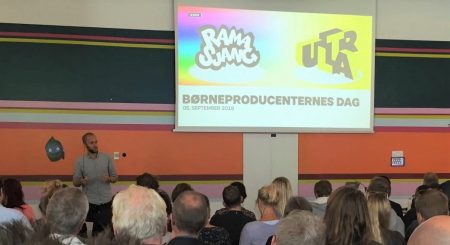
Fig. 5: The annual meeting at DR for Danish producers of children’s content, September 2019. Photo credit: Petar Mitric.
The changes in age groups mean that Ultra now has to provide the 12-14-year-olds with relevant, clickable content – which they must actively choose to watch among the abundance of content available to them. This might turn out to be a difficult task, which we will follow closely in the RYA-project together with many other topics related to fiction for children and young audiences.
Katrine Bouschinger Christensen is PhD fellow in the Section of Film Studies and Creative Media Industries at the University of Copenhagen with a thesis on producing serial drama and online fiction for children and young audiences as part of the RYA research project.
Eva Novrup Redvall is Associate Professor at the University of Copenhagen where she is head of the Section for Film Studies and Creative Media Industries and principal investigator of the RYA research project.
Notes:
[i] See the project website for the many publications coming out of this project.
[ii] For more on SKAM, see e.g. Sundet, Vilde Schanke (2019). From ‘secret’ online teen drama to international cult phenomenon: The global expansion of SKAM and its public service mission. ‘Critical Studies in Television’. https://doi.org/10.1177/1749602019879856.
[iii] See https://dr.dk/om-dr/fakta-om-dr/medieforskning/medieudviklingen.
[iv] Presentation by DR Media researcher Lene Heiselberg at the University of Copenhagen, 13 November 2018.
[v] Presentation by Jonas Kryger Hansen at the annual DR Ultra meeting “Børneproducenternes dag”, 5 September 2019.
[vi] Theoretically, the project is based on ideas of bringing production and audience studies closer together. For some thoughts on this, see e.g. Redvall 2017 and 2018.
References:
Aasholm, Andrea Buch 2019. Research interview by Katrine Bouschinger Christensen in Copenhagen, 5 December 2019.
Berså, Anne Marie. 2012. “DR navngiver ny børnekanal”. Dr.dk, 5 December 2012. https://dr.dk/presse/dr-navngiver-ny-boernekanal.
Christensen, Christa Lykke. 2013. “Engaging, critical, entertaining: Transforming public service television for children in Denmark.” In Interactions: Studies in Communication & Culture, 4(3). Bristol: Intellect Press.2018. “DR’s Public Serviceredegørelse 2018.” https://dr.dk/static/documents/2019/05/01/dr_ps_redegoerelse_2018_1_11c1fa3e_ca1c14c0.pdf.
DR (2018). Annual report “DR’s public service redegørelse”. https://dr.dk/static/documents/2019/05/01/dr_ps_redegoerelse_2018_1_11c1fa3e_ca1c14c0.pdf.
Hansen, Jonas Kryger. 2018. Presentation of fiction for children at the University of Copenhagen, 13 November 2018.
Hansen, Sarah Cecilie Simone. 2019. “DR skifter børnemålgrupper fra 2020.” Dr.dk, 2 December 2019. https://dr.dk/om-dr/nyheder/dr-skifter-boernemaalgrupper-fra-2020.
Knudsen, Sune. 2019. “Markante ændringer på TV og radio fra 2. januar 2020.” Dr.dk, 19 September 2019. https://dr.dk/om-dr/nyheder/markante-aendringer-paa-tv-og-radio-fra-2-januar-2020.
Mollerup, Jacob. 2017. “Danmarks tradition for verdens bedste børne-tv risikerer at blive et kapitel i historiebogen.” Politiken.dk. 13. July 2017. https://politiken.dk/kultur/medier/art6031741/Danmarks-tradition-for-verdens-bedste-b%C3%B8rne-tv-risikerer-at-blive-et-kapitel-i-historiebogen.
Redvall, Eva N. 2017. “Dialogues Between Audience Research and Production: The History of Testing Television Drama for the Danish Broadcasting Corporation (DR).” Critical Studies in Television 4:12, pp. 346–361.
Redvall, Eva N. 2018. “Reaching Young Audiences Through Research: Using the NABC Method to Create the Norwegian Web Teenage Drama SKAM.” In D. Thornley (ed.): True Event Adaptation: Scripting Real Lives. Basingstoke: Palgrave Macmillan, pp. 143–161.
Ofcom. 2019. “Ofcom’s Annual Report on the BBC.” https://ofcom.org.uk/__data/assets/pdf_file/0026/173735/second-bbc-annual-report.pdf.


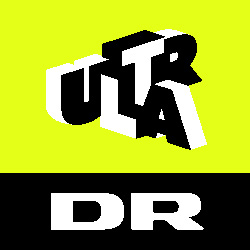



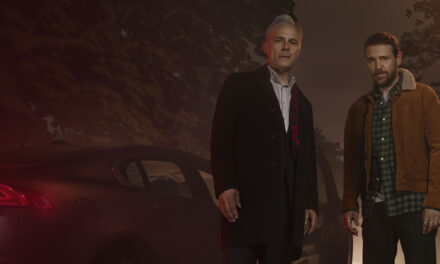
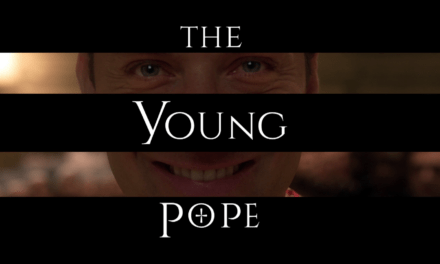

How fascinating! I’m afraid that beyond “Borgen” (one of the major TV highlights for us in the last decade), my wife and I have seen comparatively little Danish drama – so this was a fascinating read to get some more background.
Also very interesting to read about the use of “junior editors” – I don’t think I’d come across that before. Sad to see another broadcaster going on-line only (my wife and I now tend to forget that BBC Three exists because we don’t have an internet hook-up for our TV), and we’re still a bit disappointed when shows like “The Demon Headmaster” (one of our favourite current TV offerings) seem marginalised on CBBC (because – naturally – we grew up with such serials as part of the BBC One landscape in the UK).
Many thanks for a fascinating read. Much appreciated!
All the best
Andrew
Thank you for the kind words and for the positive feedback to the project.
The use of ‘junior editors’ in Danish children’s fiction is definitely interesting. We look forward to examining fiction for children and young audiences even further and in an international context. Please do let us know if you come across other researchers who share our interest in this field.
Best,
Katrine
Hello Katrine,
Always happy to leave positive feedback when I’ve enjoyed reading something. I just wish that I was properly involved in academia to help you in some way…. but I’m afraid that my inability to form arguments and not being unable to understand long words were a bit of a handicap in the field.
But while I may not know any other researchers in this area, I have flagged this posting up to a couple of people who work in children’s drama in the UK.
If I do come across anything of interest, I’ll be sure to let you know.
Hoping that you have a lovely holiday ahead.
All the best
Andrew